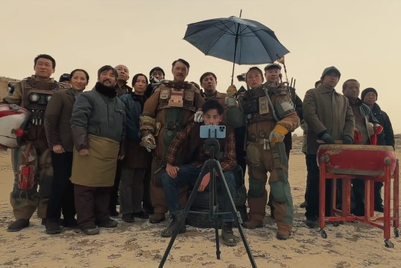
In 2014, when Tencent disrupted the old paper-money customs of Chinese New Year and launched the WeChat red envelope, the move started a revival of enthusiasm for traditional culture that had been diminishing due to the accelerated pace of people's lives in China's first- and second-tier cities.
Chinese society—and the celebration of Chinese New Year—has since been highly integrated with the mobile internet. In fact, China is at the forefront of popularising emerging technology in CNY campaigns, compared to any other market with a sizable Chinese diaspora.
One brand addressing the annual tide of Spring Festival returnees through technology is Wang Lao Ji. The herbal drink brand turned the 'way home' into a carrier of memories and emotions with a campaign created by Shanghai-based agency F5.
F5 used artificial intelligence to generate a 30-second video for each user that combines street view clips from Baidu Maps. For example, a consumer working in Guangzhou and driving home to Shijiazhuang for the festival will see a composite of urban roads, bridges, tunnels, highway sections, and scenic country roads from the route home, passing by Changsha, Wuhan, and Zhengzhou, to the end point of Shijiazhuang.

Synthesized with music, filter effects, and personalized copy, the system produces a shareable video for social media. To achieve this, F5 collected authorised clips covering more than 600 cities in China, totalling more than 100 million route combinations, with a minimal repetition rate, so no two consumers' on-the-road videos will overlap.
(An ad or ads may play first; please wait to see the video)
Technology is only one unique dimension in Chinese New Year communications in China. Nostalgia is another.
Recently, Wufangzhai, a restaurant brand in Zhejiang province renowned for its stuffed glutinous rice dumplings, released a CNY gift box. To promote it, Wufangzhai bought the music copyrights of a song (of the same title as its brand) by singer-actress Zhou Xuan, and recreated the heady Shanghainese vibes of the 1930s and 1940s in a black-and-white, retro-style music video. The video used a mirroring technique to showcase the old-fashioned lifestyles of Shanghai, with "cameos" made by leading figures of modern Chinese literature Zhang Ailing, San Mao and Lu Xun.
(An ad or ads may play first; please wait to see the video)
Apart from nostalgia, this year's other campaign rousers were high on hijinks, with deliberate doses of humour and slang. More power to brands that draw on what millennial lingo reveals: a desire to be seen as witty and funny, and also a disdain for generic and 'way too obvious' attempts to appropriate Chinese symbols onto CNY product collections, as articulated by one millennial we approached: 30-year-old Mavis Sun, an account manager at Red Ant Shanghai.


.jpg&h=334&w=500&q=100&v=20250320&c=1)


.png&h=334&w=500&q=100&v=20250320&c=1)

.jpg&h=334&w=500&q=100&v=20250320&c=1)
.png&h=334&w=500&q=100&v=20250320&c=1)
.png&h=334&w=500&q=100&v=20250320&c=1)

.png&h=334&w=500&q=100&v=20250320&c=1)

.jpg&h=268&w=401&q=100&v=20250320&c=1)



.png&h=268&w=401&q=100&v=20250320&c=1)
.jpg&h=268&w=401&q=100&v=20250320&c=1)
